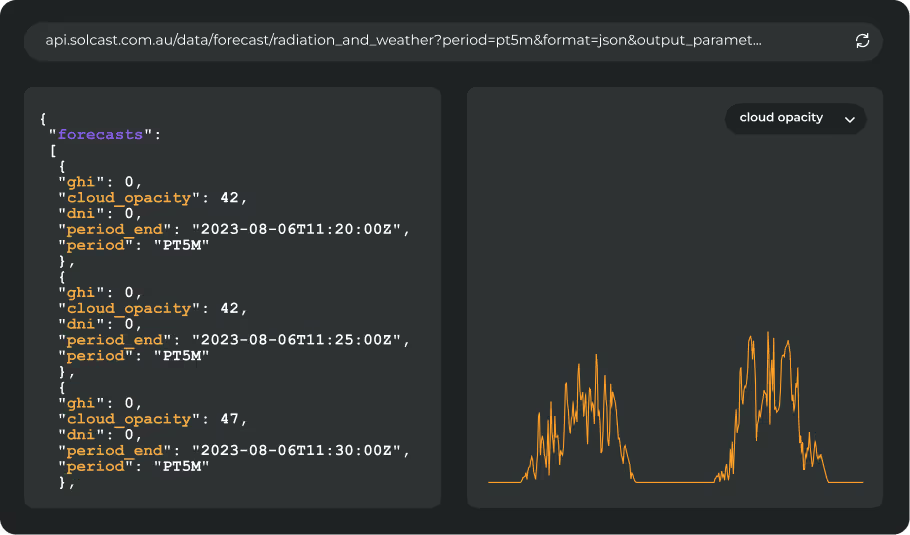Despite Tropical Storm Beryl making landfall on the morning of Monday, July 8th, relatively sunny conditions returned as the remnants of the system moved north-eastward. Although southeast Texas was most affected by damaging winds and flooding, the cloud cover from the inclement weather system did see a large but temporary dip in solar generation potential across the state.
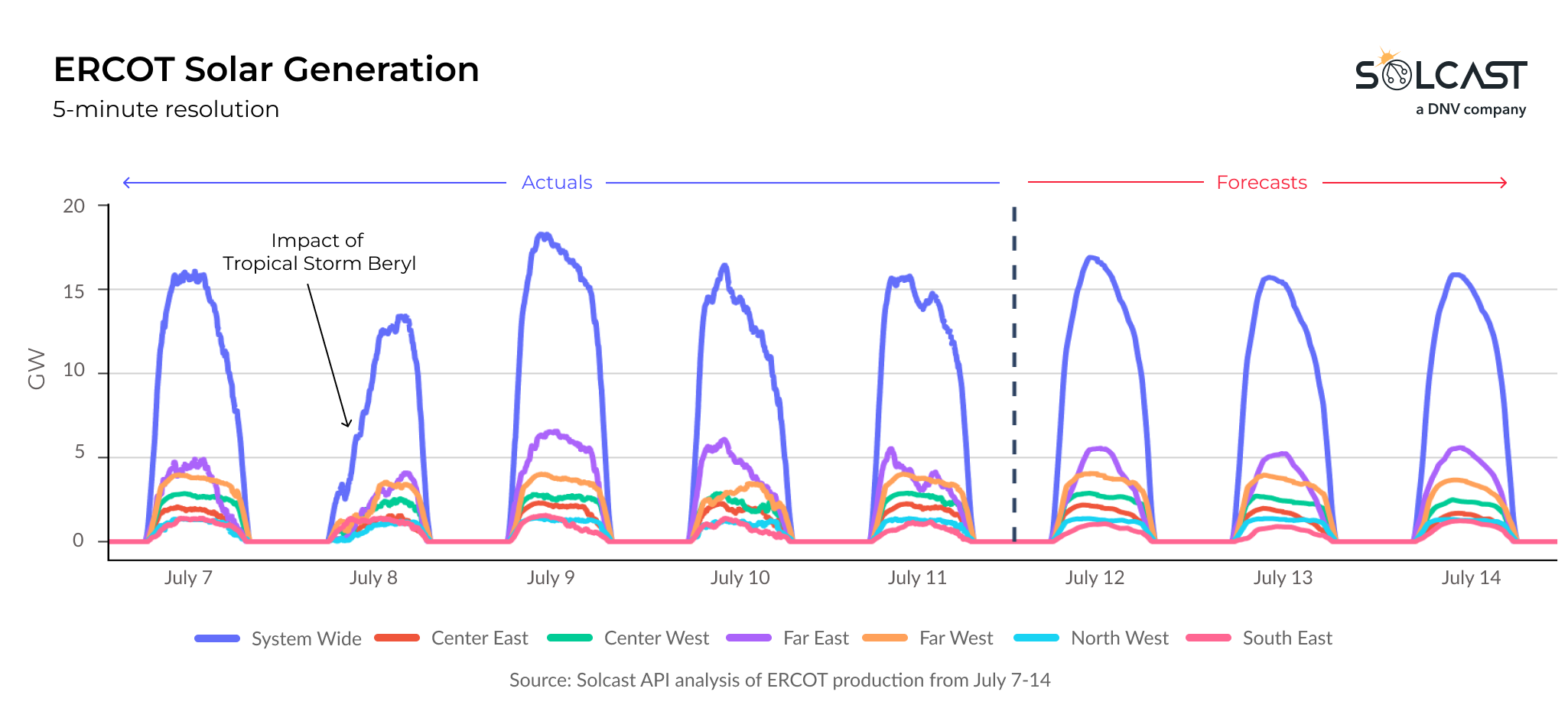
Solcast's analysis of potential utility-scale solar generation in the ERCOT electricity grid region indicates that the cloud cover associated with Beryl significantly dampened solar generation on the morning of Monday the 8th. Cross-referencing with grid operator reports reveals that very little production went offline due to the storm, showing the resilience of Texas' solar infrastructure. By Tuesday, skies over Texas were relatively clear, with only isolated convective storms as Beryl moved northeast. Forecast thunderstorms for the coming weekend are likely to only put a mild dampener on solar generation in the ERCOT electricity region, with the south-east the most impacted, according to forecasts from the Solcast API.

When comparing the second week of July to previous years, overall ERCOT production this week is expected to be only 3% below typical generation levels. However, the south-east and Far East sub-regions of ERCOT were more significantly impacted by the cloud cover from Beryl, with generation more than 15% below average for the week, showing the localized nature of the storm's impact on solar generation.
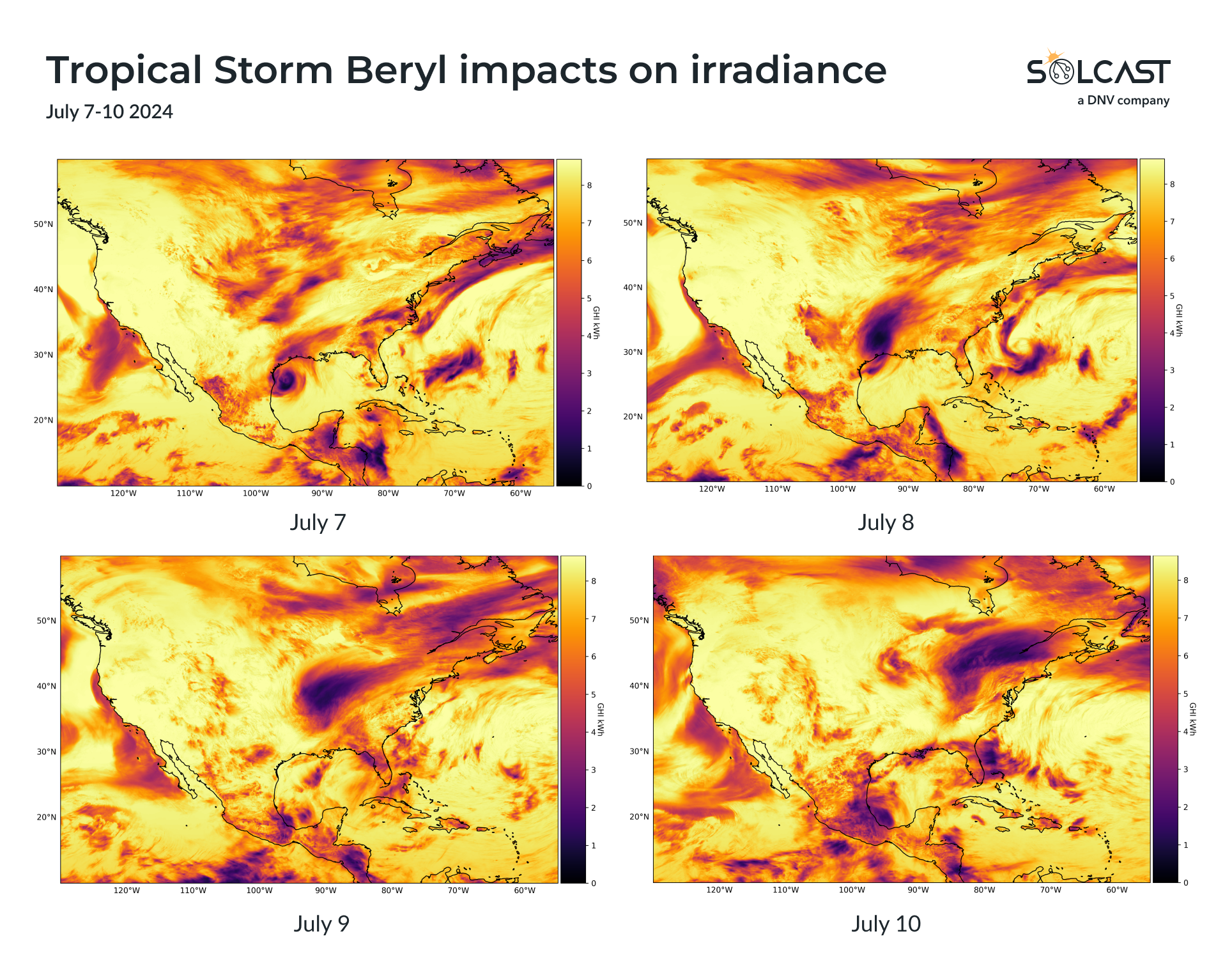
Tracking Beryl's impact on daily irradiance shows a relatively small, well-structured storm on Sunday the 7th, just before landfall. As the storm moved northeast and rapidly weakened, the peak severe weather near its core diminished, but the spatial impact on irradiance increased as the system lost structure and spread out. This pattern shows how the storm's dissipation affected solar generation potential across a broader area.
Prepare for weather events that significantly impact your assets and grid operations with accurate, reliable solar forecasts. Read about Solcast's enhanced forecast accuracy in North America. Start evaluating our data via the Solcast API toolkit, or reach out to our team to learn more.








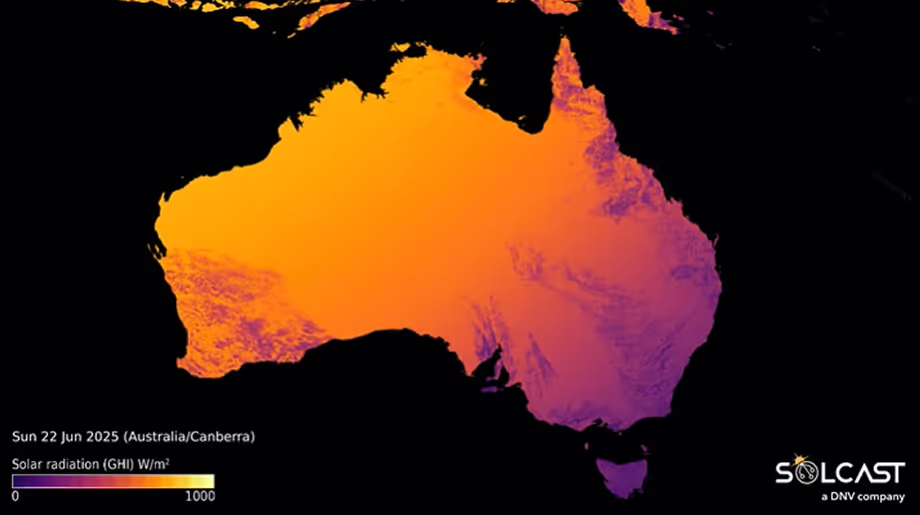
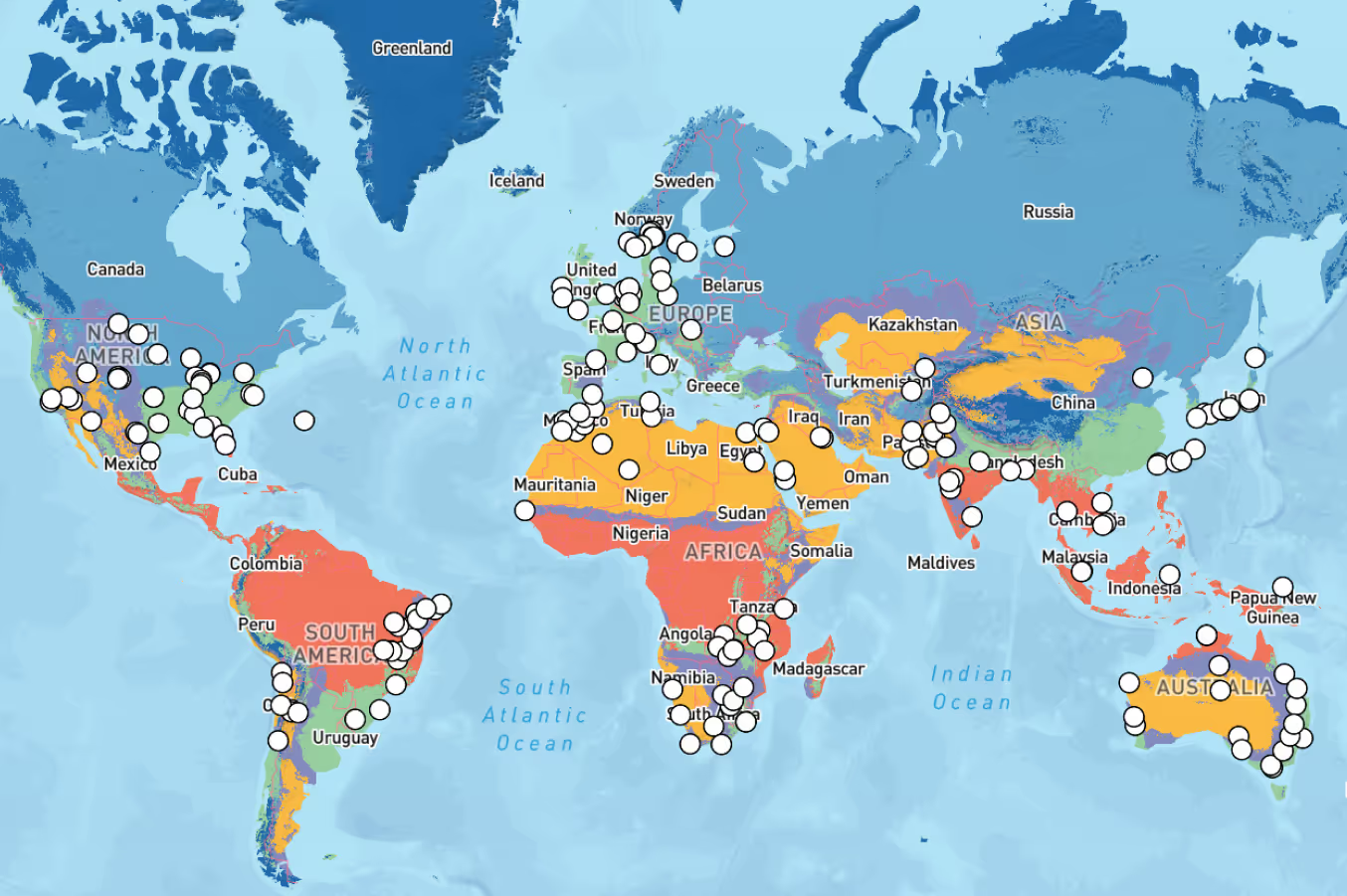
.avif)
